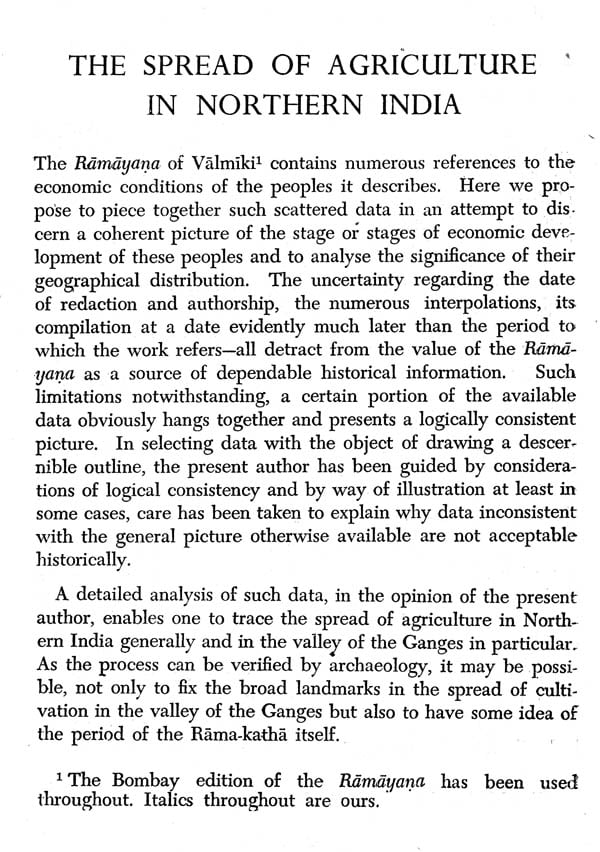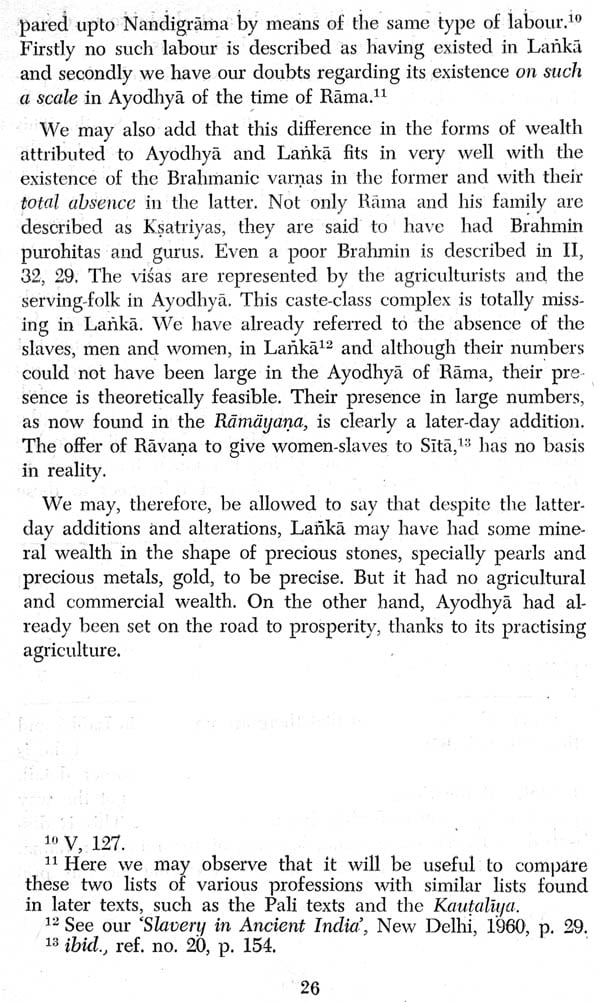
The Spread of Agriculture in Northern India (Old and Rare Book)
Book Specification
| Item Code: | NAU092 |
| Author: | Dev Raj Chanana |
| Publisher: | Suman Prakashana, New Delhi |
| Language: | ENGLISH |
| Edition: | 1963 |
| Pages: | 30 |
| Cover: | PAPERBACK |
| Other Details | 8.50 X 5.50 inch |
| Weight | 50 gm |
Book Description
The subject of the origin and the development of agriculture in India is extremely important but it has not so far received the attention it deserves.
In this short work we propose to present a few tentative conclusion concerning the spread of agriculture in Ancient India. They are based on a comprehensive study of the Ramayana of Valmiki. Although the form in which it is obtainable today is not the one in which it might have been composed, we are safe in assuming that the kernel of the story has not changed for at least two thousand years, That it was known at that time, in its present form, is proved not only by literary references but also by sculptural representations of its scenes in Sanchi. Therefore the picture emerging from our analysis .of its contents it, at least, the view of our ancestors of that epoch regarding what had happened in antiquity. While culling out details regarding the spread of agriculture from this epic, we have kept this in view. In the absence of corrobaration of these views from other sources, chief among them being archeology, we feel it proper that an effort along these lines be made so that other literary classics can also examined in the same way.
Although this epic sheds but little light on the origin of agriculture , it does enable us to have a fairly clear idea of its spread from the Ganges valley towards the Vindhyan area and on- wards. Subject to confirmation from other sources, it seems that the ‘Naras,’ as the peoples inhabiting the valleys of the Indus and the Ganges called themselves, practised agriculture, whereas their main adversaries, the Raksasas did not live by the plough. The poet, while describing the onward march of the former, seems to narrate the advance of agriculture in these areas. Onthis basis it can be said that the Rama-katha, as distinct from the date of the composition of the epic, is to be placed in the period, during which the peoples of these valleys started spreading southwards.
Traditionally the Rama-episode is believed to have been anterior to the Maha-bharata and this view has found general acceptance. The lowest date assigned to the ‘great battle’ is 1000 B.C.; there- fore the date for the Rama-episode has to be anterior to the same. This story, however, has for its background on agricultural society; therefore its date should be above 1400 B.C., the lowest date for the decay of what is generally called the Indus Valley civilisation! which had known agriculture. As the story concerns the onward march of these cultivating peoples inland into the Ganges valley, the upper limit may have to be pushed to about 2000 B.C.?








